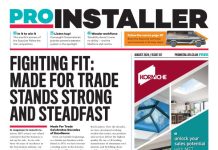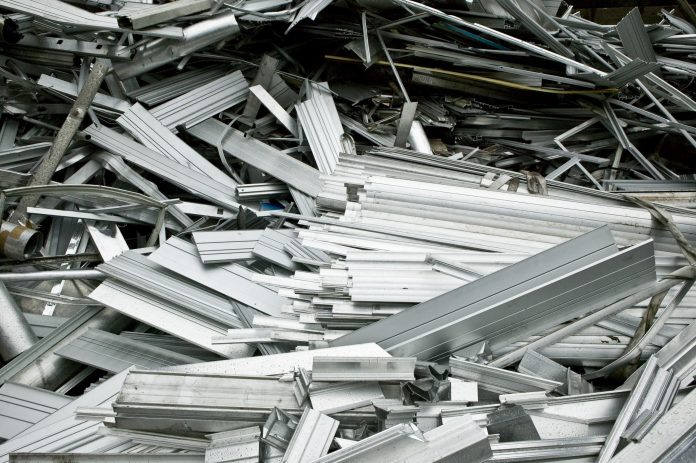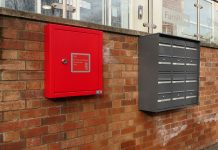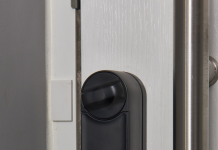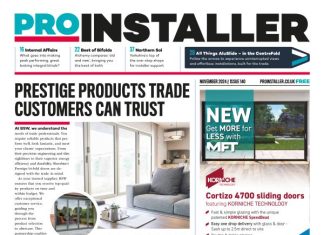 by Phil Slinger – CAB Chief Executive
by Phil Slinger – CAB Chief Executive
Unlike some other materials used in fenestration, recycling of aluminium is not a new science, we have been recycling aluminium for decades. In 1990 global demand for aluminium was around 28 million tonnes with over 8 million tonnes recycled from scrap. Today’s global demand for aluminium stands at over 70 million tonnes with over 32% of this demand now being provided by recycling ‘end of life’ products. Whilst this recycling figure seems low, the problem is two-fold, firstly, the demand for aluminium is outstripping availability of scrap and secondly, because of the extensive life aluminium can offer to products, it simply stays in use for longer.
“Since 1880 when aluminium was first available on a commercial basis, around 75% of the almost 1.5 billion tonnes of aluminium ever produced is still in productive use today”
I think we also need to remind ourselves of more of the key facts, “Aluminium can be recycled for as little as 5% of the energy needed to produce it from the earth’s plentiful resource of raw material, bauxite”, “There is no loss of quality once recycled so aluminium can be recycled many times over” and “Aluminium is non-hazardous, non-flammable and has one of the highest strengths to weight ratios of metals known to man”. With today’s high performance thermal breaks and slim sightlines, aluminium framed systems are often chosen for high thermal performance specifications as used in ‘passivhaus’ construction, further reducing carbon output.
Specifiers have long recognised the benefits of the material and consumers are now appreciating the benefits of aluminium and switching to this long lasting material which continues to have a recycling value once its current product life is over. Recovery of aluminium from recently demolished buildings can be as high as 98%, which, by virtue of its high intrinsic value, reduces the cost of demolition.
The EAA/Delft study back in 2004 confirmed that between 92% and 98% collection rates at the time were achieved in the UK’s building demolition. What is less well known is that if not appropriately separated and sorted, collected scrap can include a mix of various aluminium alloy grades. Whist this mixed recyclate may be used for cast aluminium products, for example, it is usually harder to recycle it into wrought aluminium alloy grades in a ‘closed loop’. Adding to this concern, it is known that a lot of our valuable UK scrap metals are shipped overseas, thus losing a very valuable resource and potential carbon saving in the UK given the low energy needed to convert aluminium back into a new product.
With these issues in mind, here at the Council for Aluminium in Building we have set up a ‘Closed Loop Recycling’ initiative for the UK and Ireland. The aim of the initiative is to encourage the recycling of aluminium alloys within the same alloy grades. For the CAB scheme we require that extrusion grades of aluminium, namely 6000 series alloys for the architectural aluminium market, are recycled back into the same 6000 series alloys. The same can be said for sheet aluminium recycling, namely with 1000 series alloys. It is important to reiterate that in a ‘closed loop’, an aluminium alloy can be recycled infinitely without loss of its specific characteristics.
Our pre-consumer scrap can easily be recycled before it leaves the factory as it is often ‘clean’ and of a known alloy. Post-consumer scrap is where the challenge really lies. With the many thousands of tonnes of alloy extrusion and sheet used in our buildings across the UK, we should be looking towards the advantages of deconstruction, separation and recycling, and the ability to see our built landscape as an ‘urban mine’ for raw materials. As already stated, we have recycled aluminium over many decades, primarily as it has a high recycle value, but without a ‘closed loop’ we can ‘lose’ the specific grades we require to recycle the aluminium back into the same product type. If we constrain recycling to specific alloy grades, we can recycle extrusions back into new extrusions and offer a true circular economy for our aluminium products in the UK Construction Industry. By adopting and promoting this ‘closed loop’ or ‘circular economy’ initiative, we believe that the Association is leading the industry prior to legislation being put into place.
One of the keys to this ‘closed-loop’ capability is the advent of the handheld spectrometer for identifying the content of an aluminium alloy. Easily portable and very quick to use, grades can easily be checked prior to recycling. This means that the aluminium grades could easily be checked and identified on a building site prior to deconstruction. The quantity available on a given site can also be relatively easily calculated before removal, as aluminium extrusions and sheets are usually uniform in shape and easily measured. Skips for the scrap, clearly labelled for the identified grades being removed, can be obtained from recyclers to be placed on site for collection of this valuable post-consumer scrap. The same can be said for recycling residential installations that have reached their ‘end of life’ and can be taken back to the manufacturing base where the scrap can be separated ready for collection.
On shipping to the modern recycling company, the second challenge is to remove non-aluminium components from the aluminium frames of windows and curtain walling, such as hinges, handles, gaskets, screws and weather seals. Done manually, this could take some time, and we must also consider the removal of thermal breaks made of materials such as polyamide and polyurethane. Fortunately, the technology has advanced considerably, and this process is completely automated. What is supplied back to the smelter is ‘chipped’ aluminium, with minimal contaminants such as paint and thermal breaks which are mostly removed in the process. Smelted back into ‘logs’ or ‘billets’ of aluminium, the aluminium is ready to be extruded again into new window, door or curtain wall system.
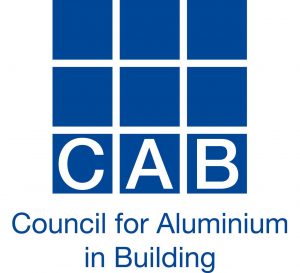 The CAB closed loop recycling scheme is open to any member to join and is just one of CAB’s recent initiatives to support its members and the wider industry. Based at the picturesque Bonds Mill development in Stonehouse, despite the pandemic, it is business as usual and staff are on hand at the offices or are working remotely to answer any aluminium fenestration related questions. News and event information is also regularly updated on the CAB website at www.c-a-b.org.uk. For Association Membership enquiries, please contact Jessica Dean at the CAB offices by email jessica.dean@c-a-b.org.uk or telephone 01453 828851.
The CAB closed loop recycling scheme is open to any member to join and is just one of CAB’s recent initiatives to support its members and the wider industry. Based at the picturesque Bonds Mill development in Stonehouse, despite the pandemic, it is business as usual and staff are on hand at the offices or are working remotely to answer any aluminium fenestration related questions. News and event information is also regularly updated on the CAB website at www.c-a-b.org.uk. For Association Membership enquiries, please contact Jessica Dean at the CAB offices by email jessica.dean@c-a-b.org.uk or telephone 01453 828851.





